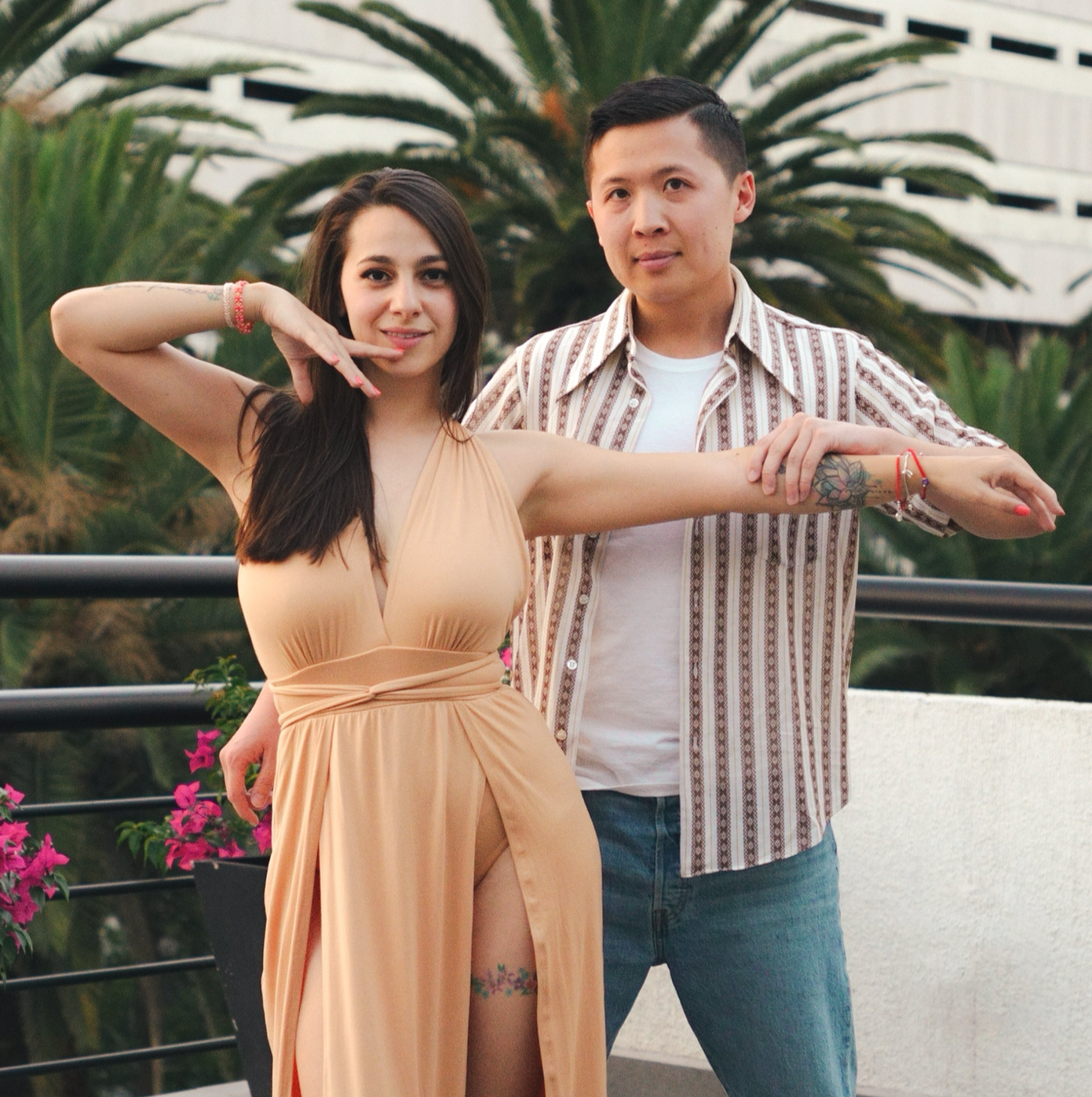I Quit My Job to Study Chess for 7 Months and Beat a National Master
The lessons learned from 57 tournament rated games, 200+ hours of deliberate practice, and finding out who I really am in the process.
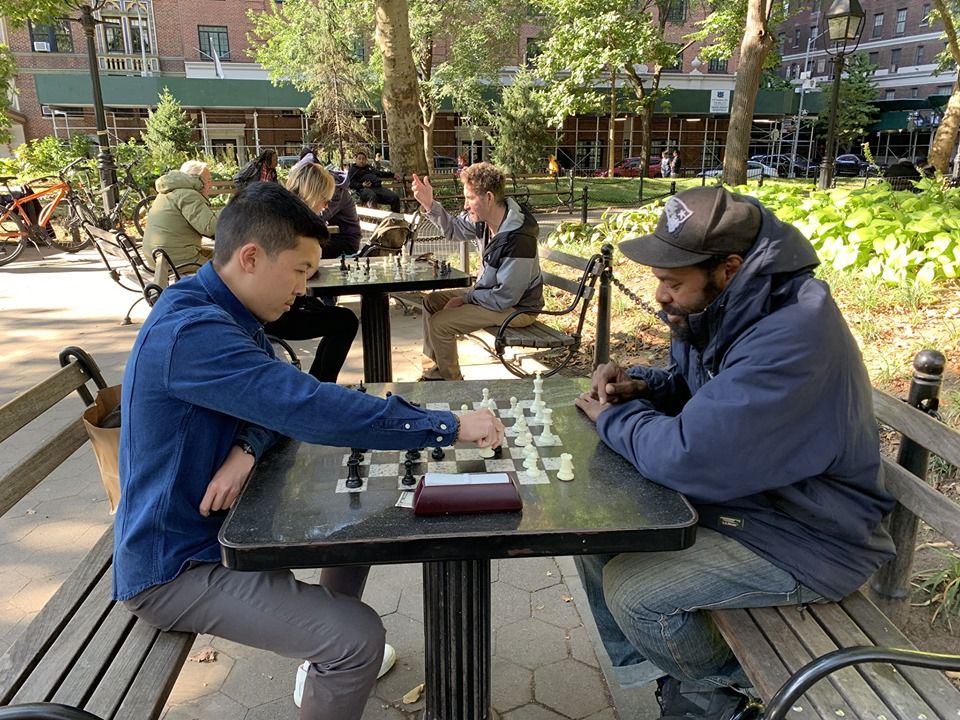
I had everything going for me in the summer of 2018.
I was on track to hit $100,000 in business for the first time ever as a digital marketing consultant, the largest amount of money I had ever made as a young professional. I had just signed a contract to work with a New York Times bestselling author, someone that I’ve dreamed about collaborating with ever since I dropped out of college at 18. I was living the “digital nomad” life working remotely and adventuring around South Africa, Mexico, Thailand, and more places.
But on August 11, 2018, I quit everything, moved back home to San Francisco with no stable income, and devoted the next chapter of my life to chess.
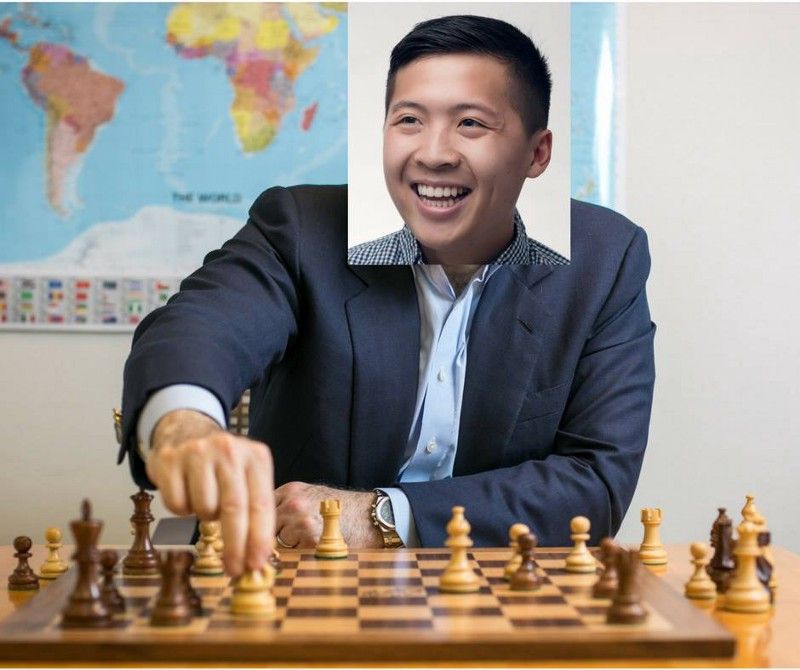
There is a famous story of a messager traveling to meet King Charles I with dire news: their allies betrayed them and their army is on the verge of losing the war. But the king doesn’t even glance up from his chessboard as he is deep into thought. He kept playing. Nothing else was more important than the war happening on the board, despite you know, having your whole country burn down in flames.
When Charles was eventually executed, the first English monarch ever to be put to death, he was allowed to bring two items with him to the scaffold where he was beheaded: a Bible and his chessboard.
Ask any serious chess player if they can relate to this story and they will immediately “get it.” Not the beheading part of course, but being fully immersed in the game. This was where my head was (no pun intended) during this new transition. I couldn’t stop thinking about the game and if there was any “good” time to do be fully immersed, it was now.
The beginning
I started playing chess casually as a kid with my younger sister. During summer break, my dad would bring us both to his computer repair shop and we had to find some way to pass 8 hours of time. For some strange reason, my dad had this glass chess set under his desk (even though he doesn’t know how to play) and that was where the story began.
I didn’t play any chess outside of that until I got into high school and joined the chess club. This was when I started to compete in rated tournaments and simply be around other kids who loved the game. I got obsessed and got relatively good, fast.
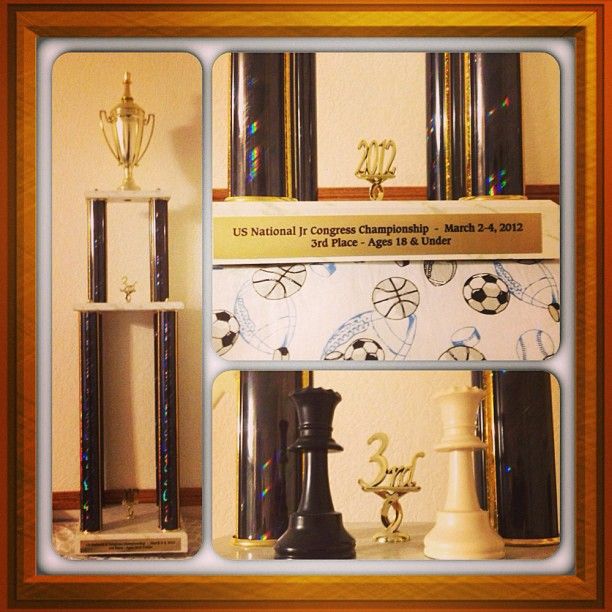
I quit competing during my senior year of high school because honestly, chess wasn’t that “cool.” I met my first girlfriend, became district council for my leadership club (which was a huge deal), and had a silly goose time with my friends every day now that we all could legally drive.
To get to the next level in chess for me required serious training: solving tactic problems, studying opening theory, and mastering my endgame fundamentals. I wasn’t willing to spend my last year of high school indoors staring at a chessboard.
I stopped playing for many years and thought this little hobby was fun while it lasted. But you know something is up when you’re in a new country and instead of exploring the city and meeting new people, you bring your laptop to the coffee shops with the fastest wifi to watch hour-long chess lectures on YouTube.

I remember being in Chiang Mai, Thailand — a small and cozy city where you can relax, eat endless amounts of Pad Thai and Khao Soi for a few bucks each, dive under waterfalls, ride on motorbikes, and meet other travelers.
But nah. I wanted to learn chess. I wanted to watch grandmaster Varuzhan Akobian analyze his games playing the Queen’s Gambit Declined. I listened intently behind my MacBook as grandmaster Ben Finegold’s witty banter explained how to win Rook endgames.
I remember getting foot massages and bringing my laptop in with me so that I can be “productive” and watch one more lecture.
My friends back home were so confused. “You traveled to Thailand to watch chess videos behind your laptop?”
I didn’t care that this was weird. I didn’t care that I was in Asia watching chess lectures and playing online with random strangers. All I wanted to do was learn chess… and that was what I set out to do once I came back home.

How far could I go?
I am fascinated by people who go “all-in” into their craft. Athletes, Olympians, fighters, artists, writers, you know it. They push themselves to their full potential and live and die with their results. I wanted to know for myself… how far could I go with chess?
I’ve been reading Scott Young’s blog for several years now and what drew me to him was his ultra learning projects. Scott learned MIT’s curriculum through self-study and discipline without ever going to MIT. He spent one whole year devoting himself to speak no English, learning new 5 languages completely immersing himself. This really planted the idea for myself of going “all-in” in chess. It was already consuming my life. What do I have to lose?
I’m young. I have savings. I have time. When else in my entire life would there be a better opportunity to make this happen?
Going all-in on chess
I didn’t get myself a specific deadline, although that may have been a wise thing to do in retrospect. But I was off to the races. I had all this time now that I was back in the states and finished the last pieces of my work contracts.
With chess, what should I focus on? What is my plan?
I’ve noticed many themes that professional chess players say throughout their lectures on how to improve at chess.
Solve Tactics
Some say chess is 90% tactics, basically spotting common patterns and seizing the opportunity to gain an advantage. You can understand almost nothing else in chess and be a decent player with strong tactical ability.
Play tournament rated games
This is what performance nerds would classify as “deliberate practice.” These games give you the opportunity to critically think about every move you make because of the longer time format. An average game might last 30 moves but a player can take up to two hours to make all those moves. Imagine you and your opponent make one move every four minutes, for four hours, for five games over the weekend. Welcome to tournament chess.
Analyze your games
After every tournament game, every chess player looks at their notation sheet (everyone must record their moves) and reviews the game in its entirety, to see how they could have improved. When analyzing, I’d normally pause at critical moments where I felt stuck to dig deeper into other variations that I didn’t have time to calculate or other candidate moves that I haven’t considered making. Only after you analyze your games is when you compare your notes to a computer, where they can instantly tell you the objectively best move, and promptly cry when your analysis is wrong and you are affirmed that you are not as smart as you think you are.
The recommended time to analyze your game is at least 30 minutes, but usually 45–60 minutes, or more if it’s a more difficult game.
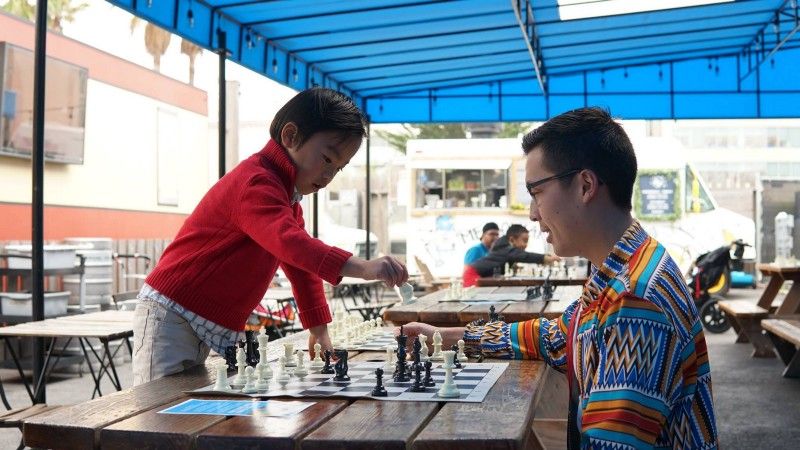
Study your fundamentals
Winning technical endgames should be your first priority. Imagine that you have a king and a pawn vs. your opponent’s king. You both know that when a pawn reaches to the other side, the pawn can evolve into any piece they’d like excluding the King. Do you know how to successfully get your pawn to the other side and promote? Then do you know how to checkmate with a King and Queen vs King?
Understand opening theory. Chess has been around for so long, that thousands of people have already played the first few moves that you might naturally play in your games. Openings have been named around the first few moves of every possible combination of chess moves such as the Benoni Defense, Queen’s Gambit Accepted, Four Knights Game, French Defense, and Ruy Lopez. Choose a few openings and don’t just memorize the moves, understand why chess practitioners play those moves in that specific order. Every move has a purpose and the opening theory is based on the millions of games that experts have played before. I used to try and be cute and play outside of theory to be “different” but I would consistently get crushed and learn the hard way why opening theory exists.
Learn middlegame strategy. What you do in the middlegame stems from what openings you play. The opening you choose has different short term and long term goals and the middlegame is where you execute on your big ideas. You are often building up an attack against your opponent’s king or placing your pieces on better squares to improve your position. This is where your tactics training shines as you can gain an advantage with winning material.
Hire a coach. This step is optional for most amateur players but I wanted to accelerate my learning. I knew that having people around that were better than you could point out your blind spots faster and help you make fewer mistakes. This is why I hired International Master, Eric Rosen, for private chess lessons via Zoom. I found Eric through his lectures on the Saint Louis Chess Club YouTube Channel and loved his teaching style and creativity towards chess. Below is an example of what a lesson looks like.
Mini Chess lesson before we dive in
During every game, players are forced to notate the moves that each person plays. Similar to Spanish or Vietnamese, chess has its own language that players communicate with. Bc4 means that the bishop moved to the c4 square on the board, every single one of the 64 squares has a “name” like from a1 to h8. Kb1 means that the King moved to the b1 square. Nxd4 means that the Knight captured a piece and landed on the d4 square.
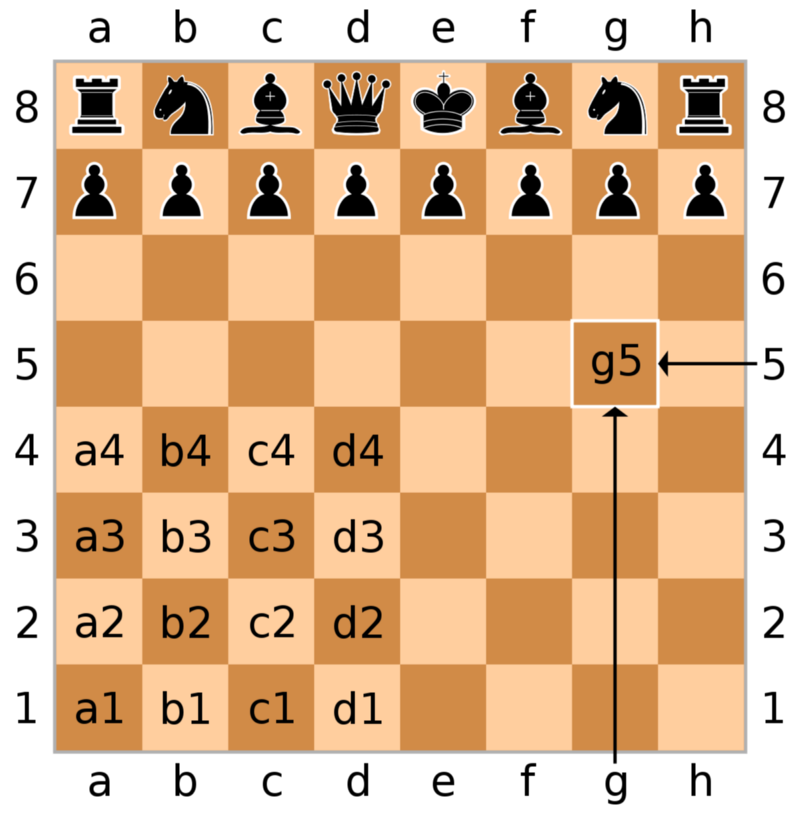
I started this quest with no goal in mind except to push myself to my highest potential. I learned a long time ago that the top performers in any field say one thing consistently:
Be obsessed with the process, not the goal.
I wasn’t trying to be a grandmaster. I didn’t try to be a chess expert. All I needed to do was do my best.
Below is an example of a normal week for me. I would study on weekday mornings until lunchtime. Go teach chess to kids after school and with private lessons (another layer of being fully immersed). Then compete in an all-day weekend tournament, to repeat the same week again the Monday after.
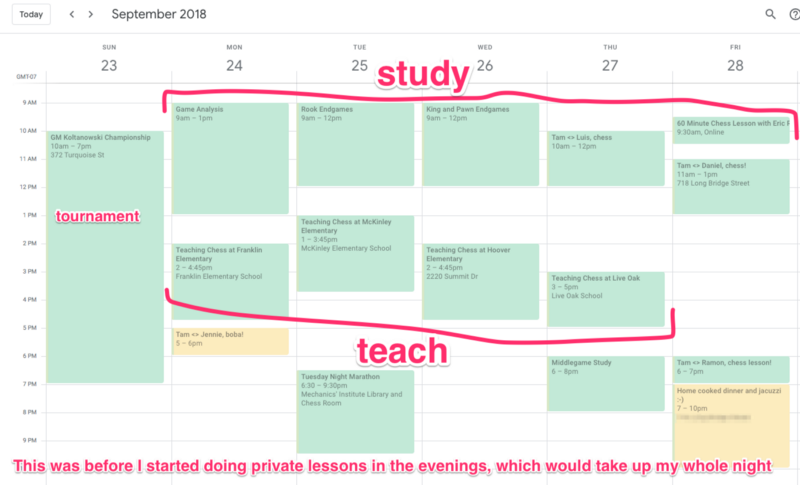
My approach was highly aggressive. But I loved the process. I love staring at a board for 30 minutes being so close to solving a tactic problem. I loved learning the history of the legendary players who made their mark in the chess world and review their games.
I’ve played 57 rated games from August 18, 2019 — December 13, 2019. Before I show you my most notable games, let me break down chess ratings for you.
Having a rating of 1200 is average, 1500 is above average, 1800 is intermediate, 2000 is expert, 2200 is master, and 2400+ goes into international master/grandmaster territory.
My rating from high school was 1459, pretty middle of the pack, and I was excited to see how far I could go.
Without further ado, let’s look at some of my games (full annotated games can be found in this study) and the lessons learned from it.
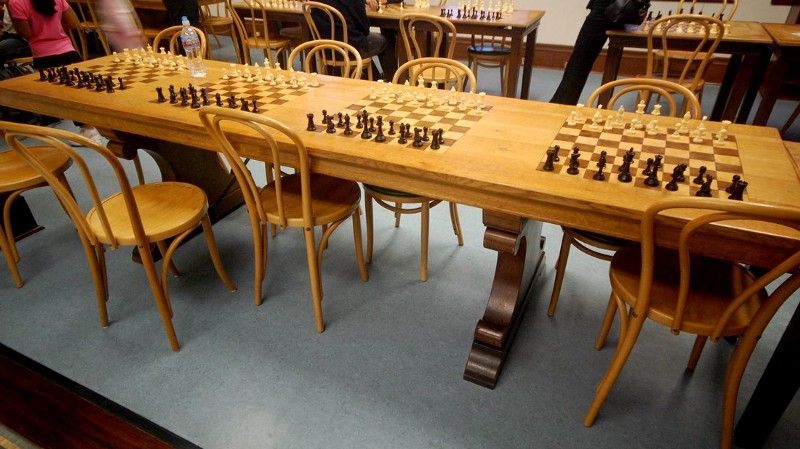
Game 1 — My first tournament game in 7 years vs 1915 player
I sit down at Mechanics Institute Chess Club, the largest active chess club in North America based in San Francisco, for my first tournament in 7 years. I’m playing a skinny Indian teenager that’s rated 1915 ELO. Compared to my 1459 rating, that is a solid 400 points higher than me and I felt incredibly intimidated.
The time controls were game in 55 minutes (we both had 55 minutes to complete all our moves) with a 5-second delay after every move. I was so used to playing fast games of chess online that I spent the first 7 moves rapid fast and already got myself in a dangerous position.
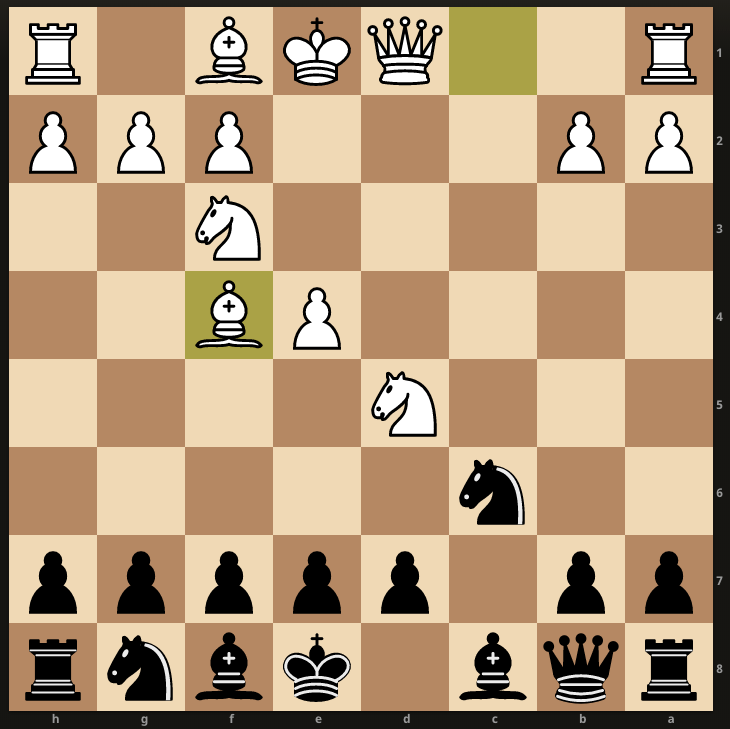
I’m playing Black in this game so I’m already at a disadvantage since I don’t get the first move privilege. I’m way below on the rating scale. I’m nervous and already 7 moves in, my Queen is somehow on b8, getting harassed by all angles from White’s incredibly active pieces.
This is how my comeback story to chess is going to start? Seriously?
But I fought back hard. I survived the storm and when I started defending very well, my opponent couldn’t find a way to keep his advantage. When you’re desperate to do everything you can to keep your position, you start to not look at the position objectively, and make moves that don’t best serve you.
This was a classic example. My opponent had an early advantage in the opening but after I equalized the position in the middlegame, he still wanted to play as if he had a great advantage instead of objectively evaluating the position and playing accordingly.
My opponent made a few small mistakes that I was able to capitalize on. Once I got my pieces developed and made sure my King was safe, I was back in the flow, just like I had never stopped playing for 7 years.
We entered the end game, where there are very few pieces left on the board, and I came out with the advantage having a “passed pawn” or a pawn that has a clear pathway to the other side where once it reaches the promised land, can evolve into any piece it wishes to do.
Pawns are like pokemon where they are very weak in the early days but get stronger over time and eventually turns into a Gyarados.

I won the game and surprised myself and everyone in the tournament. Tam “the chess player” Pham is back in business!!!
Game 17 — Playing a chess expert for the first time
Anyone rated over 2000 was like a walking miracle to me. How the hell did you get so dam smart? To a 1400 player, a 2000 player seemed invincible. But after my first win against my first opponent rated 1900 and a few close losses and draws against other higher rated players, I realized that they weren’t unbeatable. Chess experts were human just like everyone else. This game proved to be a wild ride.
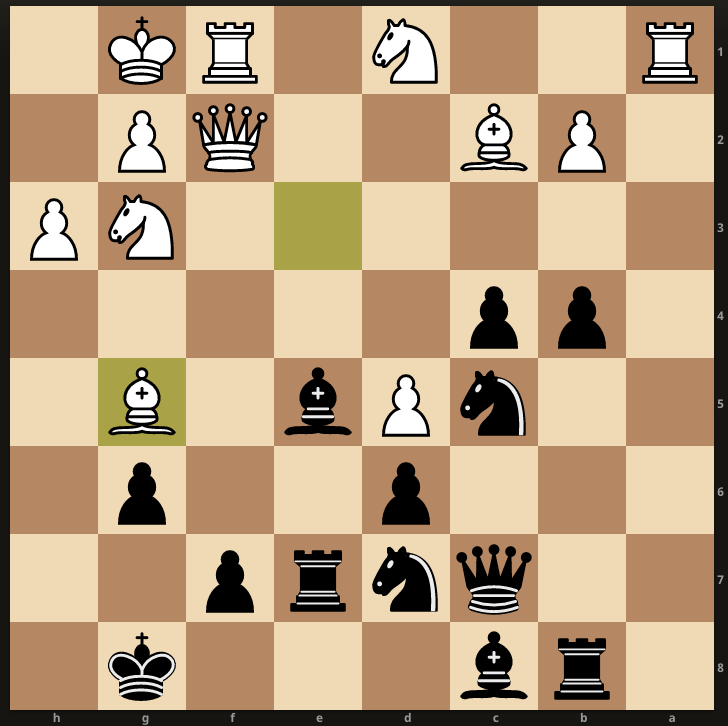
I had the Black pieces again and played the Benoni defense, which is known for wild and chaotic games of crushing attacks and beautiful sacrifices. Usually if Black can avoid getting checkmated, the Benoni player has a favorable endgame with great play on the Queenside, and eventually win.
I was doing extremely well and had more time than him on my clock. I thought I had a great fighting chance! But then I started to see ghosts.
Seeing ghosts in chess is when you start to see threats that your opponent doesn’t have. Instead of having an objective view and calculating what your opponent has, you start to make stories up in your head, and play the position poorly.
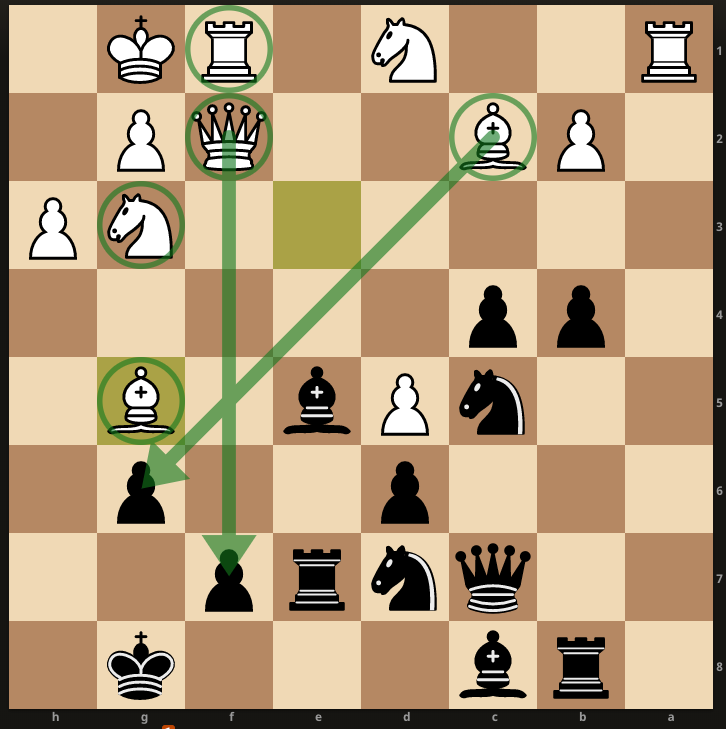
Notice that all of White’s pieces are pointed towards my King. I was so scared that the shelter in front of my king will be exposed and that I’d miss a checkmate. I also thought that this guy is a chess mother fucking expert!!! He must know what he was doing (he admitted that he didn’t know what he was doing after the game).
Black is actually winning in this position. All Black needs to do is defend well and win the favorable endgame. But I got scared. I couldn’t handle the pressure and played the worst move on the board.
I played 23. Bxg3??
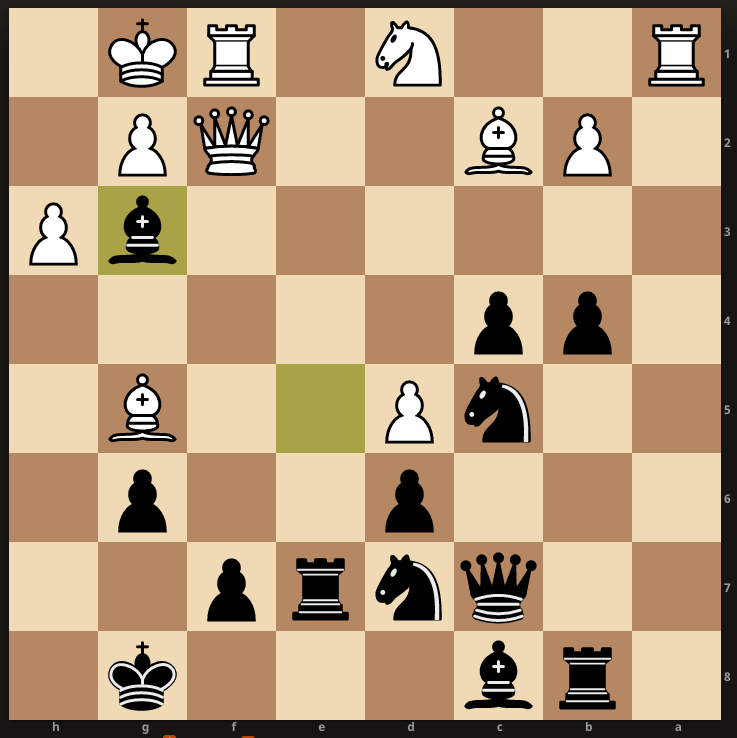
This notation means that my Bishop (B) captured (x) the knight on g3 (the square). Usually, you can write Bxg3 and move on with your day but in my analysis, I wrote “??” because that basically tells everyone reading that this is a dumb move. Or a “blunder” in chess.
I went from winning to losing in an instant. Why did I capture the knight? My logic was that if I got rid of all the pieces and traded everything, the attack will be over and everything will be fine. But oh no… I made his attack even stronger giving away one of my most important defenders.
Suddenly all his pieces were getting into the attack and I couldn’t defend fast enough. I resigned from the game 14 moves later and wrote this final note in my analysis.
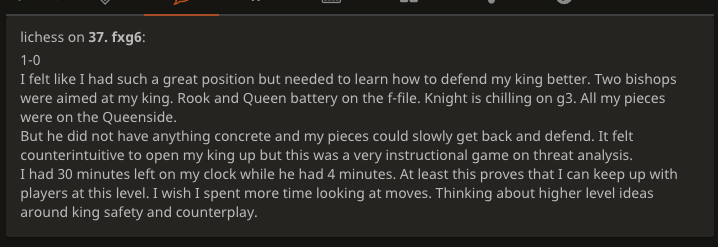
Game 24 — Losing to a player 400 points lower than me
I couldn’t sleep after this game.
After winning higher rated players or at least getting a draw/putting up a very tough fight, I raised my rating from 1459 to high 1600s. That is incredible progress and I felt on top of the world.
I paired up to play against a 1339 player which I thought would be a piece of cake. But one mistake in the opening lost me my advantage immediately.
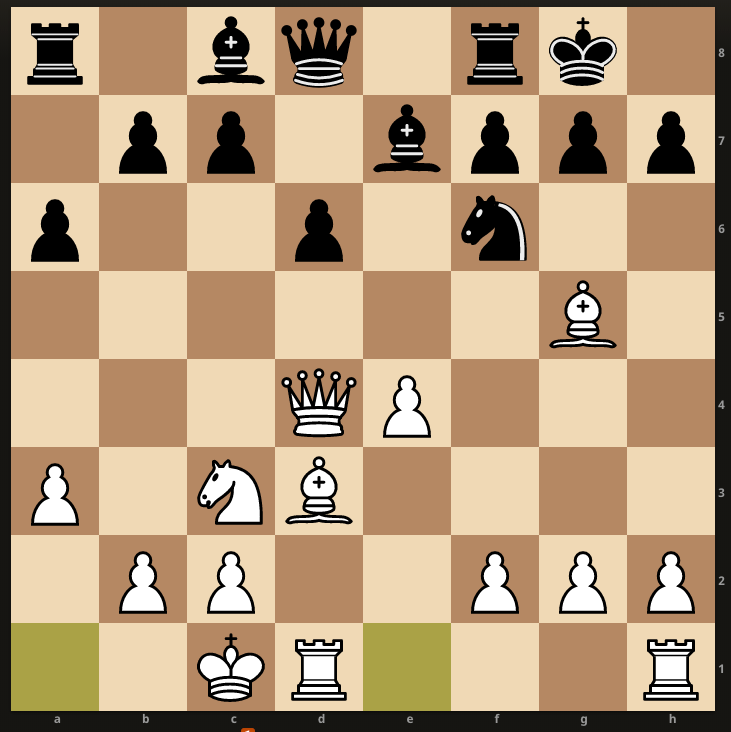
On move 10, I castled on the Queenside, very happy and confident about my position. My pieces are developed. My king is safe. My Queen is looking pretty and untouched in the center of the board.
But another challenge for you… What move did Black play that gives him an edge?
-
-
-
-
-
The answer is… 10. c5! After 11. Qe3 Black has a nifty move, Ng4!
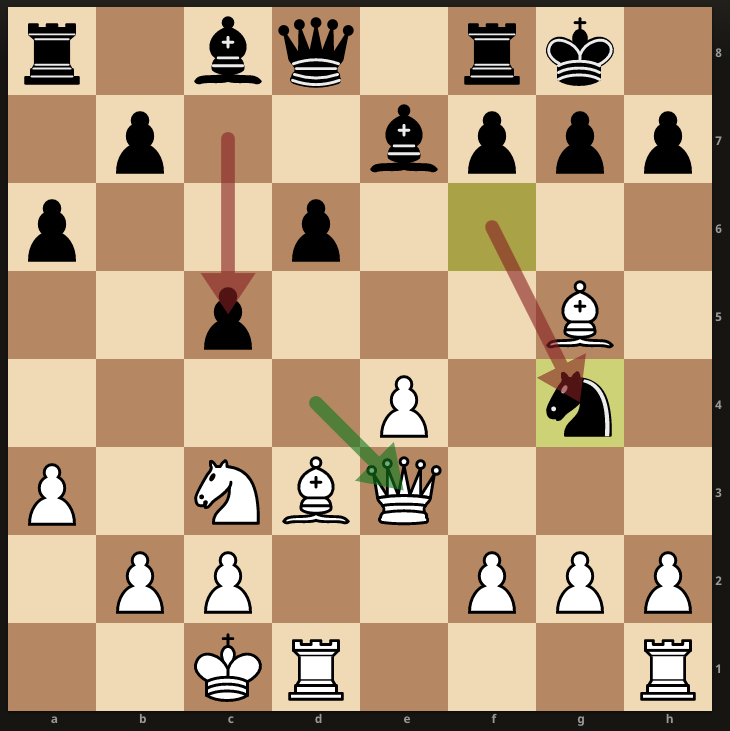
I wasn’t outright losing, but having a 1300 player do this to me after my win streaks felt like a slap in the face. Downright disrespectful.
I couldn’t recover from this simple tactic and to my opponent’s credit, he finished the game very well. Vincent played solid with very few mistakes.
This game humbled me. It taught me to never underestimate any opponent ever again, regardless of their rating. I wasn’t as good as I thought I was.
Game 27: Winning the game in a drawn position
Some new news for you: Chess games played at the highest level mostly end in a draw.
During the recent 2018 Chess World Championships between Magnus Carlsen (Norway) and Fabiano Caruana (New York), all 12 games under the classical time control (imagine the length of your entire workday, but on a chessboard) ended in a draw.
Sometimes a player will have one more pawn than the other player and offer a draw despite the advantage. Why? Because some positions are theortically a draw where no other player can make progress without losing the game or giving your opponent stalemate (a position where the opponent’s king cannot legally move while not being under attack) which is also a draw.
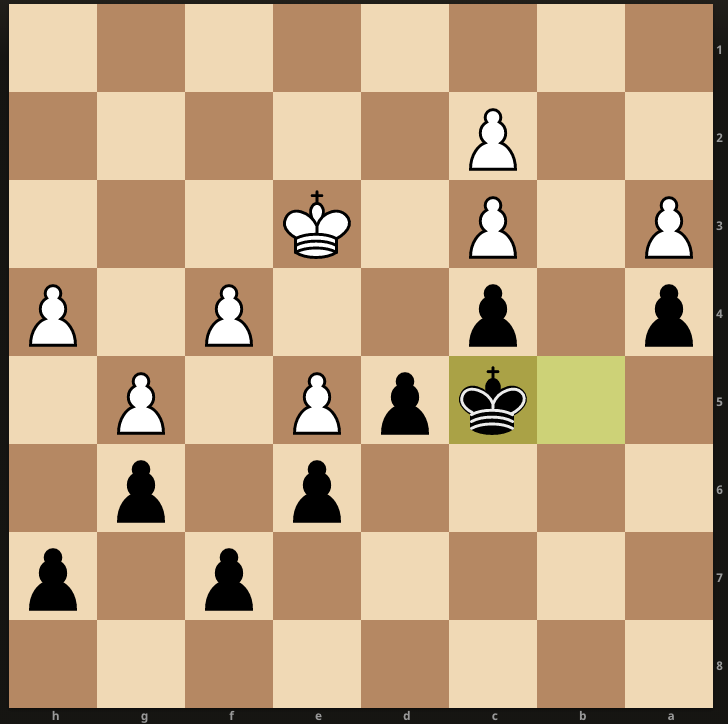
I had this position against an 1800 rated player. Even though we had the same number of pawns, none of us can make significant progress. White can never push his pawns on h4 or f4 because my black pawns will capture it. And as long as White’s king is on e3, I can never push my d pawn safely, and my King can never “enter” the position. Because if my King can come into White’s territory and eat his pawns, I will win, and go home happy. :)
But White HAS to realize that he needs to use his king to blockade me from coming in. But can he find the right move…?
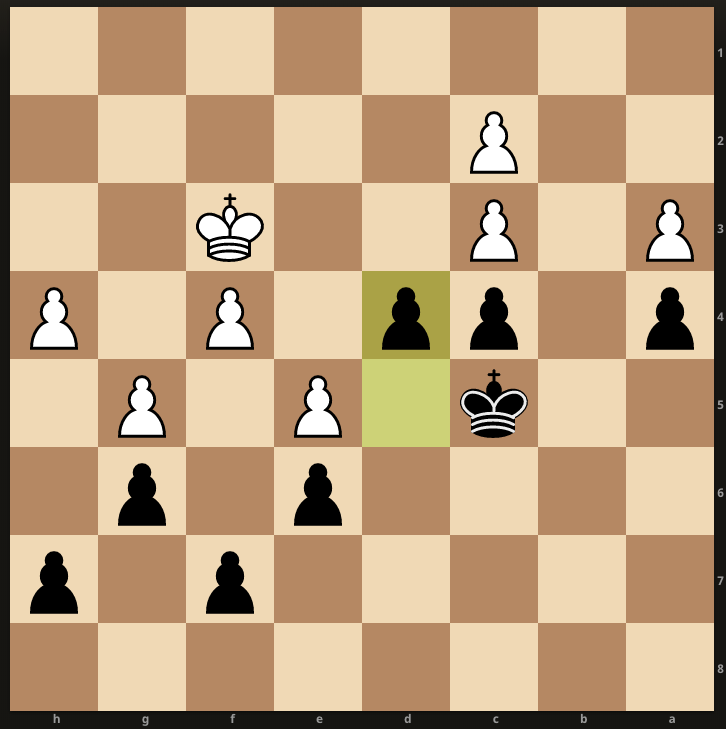
White played 44. Kf3 and I played 44. d4 — my final try at trying to win. It’s also important to note that we were both under 2 minutes each on our clocks, so we didn’t have a lot of time to think deeply.
Rushed by the time pressure, my opponent played a losing move but before I tell you it… I have a challenge for you. What are the only two potential moves that draws for White?
The answer is…
-
-
-
-
-
44. Kf2! Or 44. Ke2!
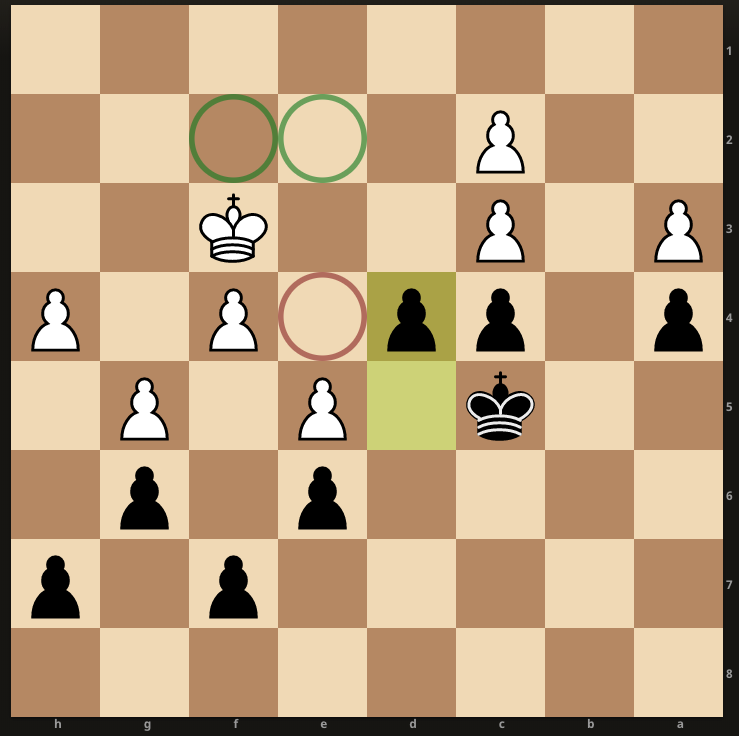
But how does that make sense? Aren’t you giving access for the King to march in? Aren’t you giving up your c-pawn?
What you must realize that Black can only win if he can activate his king. So as long as White can stop that, it’s a draw, regardless if White loses another pawn.
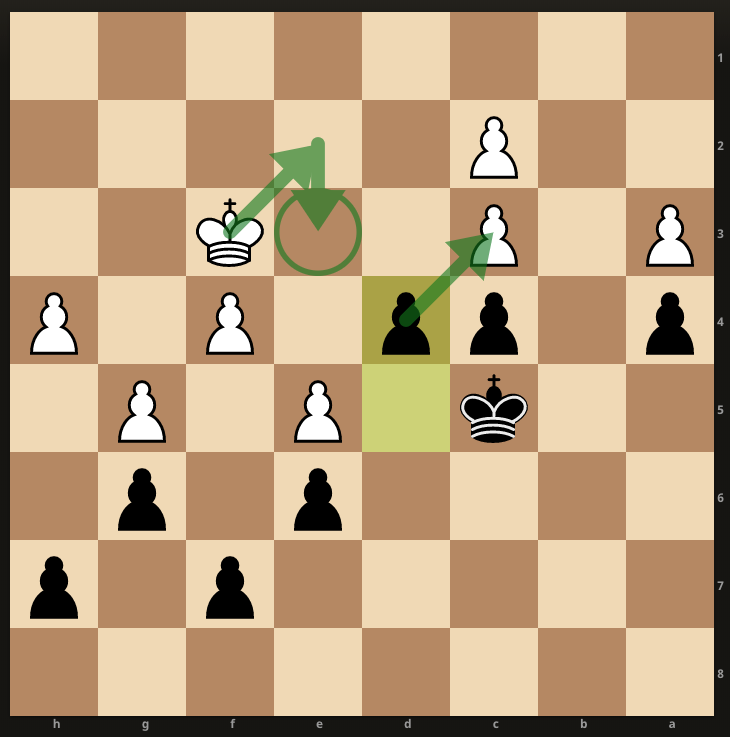
If I were to capture the pawn on c3, the White king can plant itself back on e3, and ask Black — sure you won one more pawn, but how can you make progress when everything is blocaded?
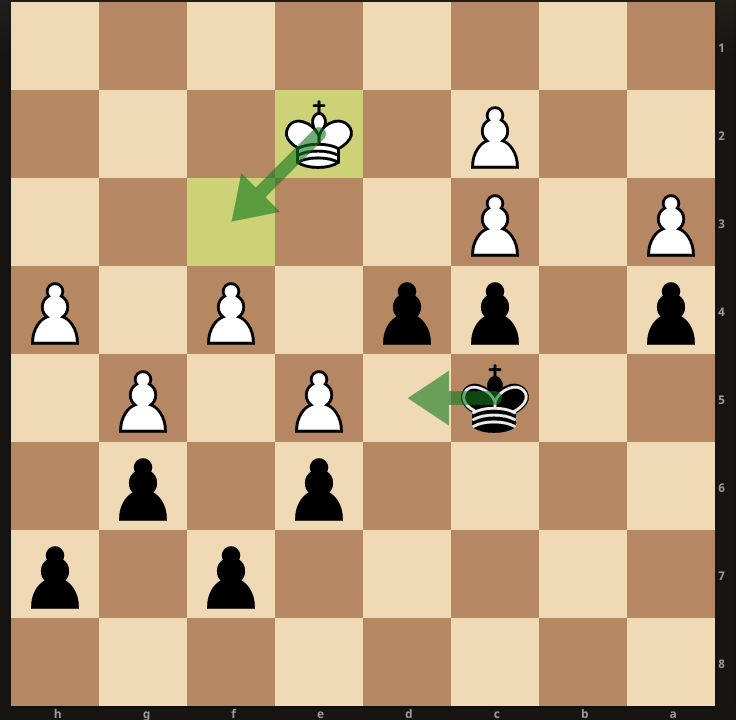
If I moved my King first to d5 instead, White can simply go play Kf3 and never let my king enter the important e4 square. And If I capture the pawn on c3, white plays Ke3 and we are back to the same position as before.
It is very counterintuitive to go backward and give up a pawn. But once you know the main idea, it becomes quite simple. Given more time, I’m sure my opponent would have spotted this. However, he made the losing move which was moving forward to Ke4??
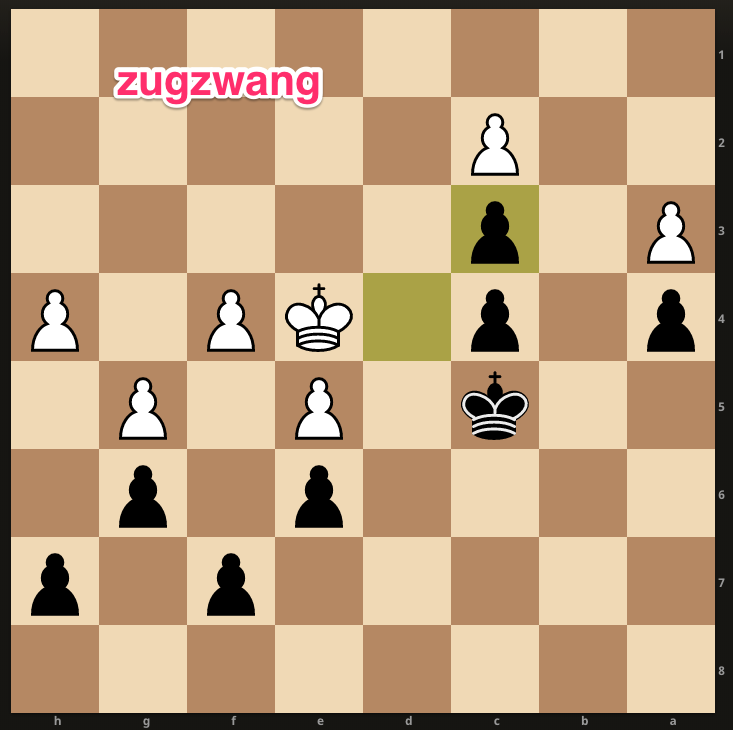
After I played dxc3, capturing White’s pawn, White is now in “zugzwang.”
Zugzwang in chess is when you put your opponent in a position where every single move they make makes their position worse. Everything loses. There’s no “pass” in chess because if this was Black to move and not White, Black would actually be the one in zugzwang. So timing is incredibly important and one wrong move like Ke4 loses the whole game.
The White King is forced back and the black king can now enter and start chomping on all the pawns. Imagine playing a chess game for 4 hours and make one small natural mistake to lose the entire game.
Chess can be a brutal game.
I won this game in very lucky fashion and found it to be incredibly instructive on how to understand the main idea (stop Black’s king from entering) and consider playing a counterintuitive backward move (Kf2) and giving up a pawn to accomplish this goal.
Game 31 — Being too scared to push for the win against 1st seed
I’m tied for 2nd place in the 4-round weekend tournament. I’m in the final round against the number 1 seed, this kid named Priyadarsi that I’ve seen around at literally every tournament I’ve been going to. This guy has been competing hard and I don’t know why I feel so intimated by teenage Indian kids. Maybe I think everyone’s a secret prodigy or have some kind of gene that I don’t.
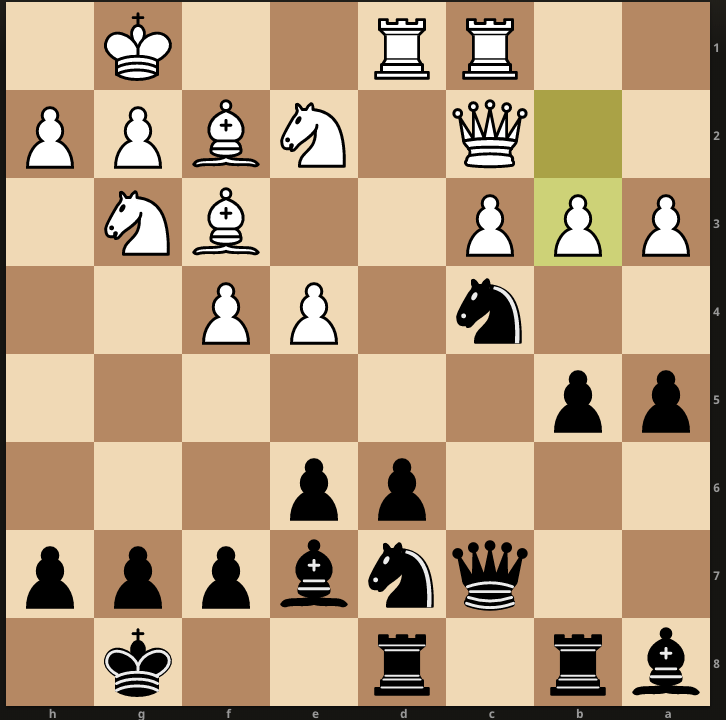
We reached this critical position where he played 21. b3. I wasn’t extremely comfortable in these kinds of positions and felt like I needed to study more on how to play the middle game.
And just as I was thinking these thoughts, my opponent offers me a draw. What the hell??
In chess, you can offer a draw at any time. But you usually do so when the position is completely drawn where no player can make progress or when you’re losing. So why is the number 1 seed offering me a draw?
Maybe he wanted to secure 1st place. Maybe he was tired from playing 10 hours of chess. Or maybe… he just made a mistake.
21. b3 in fact was a mistake because my knight can now freely capture the pawn on a3. But would I know how to continue the game from there? Should I push for a win even though I wasn’t familiar with these kinds of middlegames? Wouldn’t a draw against the 1st seed be nice?
I accepted the draw. Relieved, I walked outside and ate some amazing Vietnamese food.
On the drive back home to San Francisco, I started to get so angry with myself.
What the fuck did I just do? What am I scared of? Why didn’t I go for a win? Did I really drive an hour each way to San Jose for the entire weekend of chess and settle for a draw!?
UGH. I got so heated. Then that anger turned to sadness and eventually self-doubt. Maybe I’m not cut out for this.
I still think about this game, Priyadarshi, and the b3 move, imagining how the game would have played out if I fought.
I offhandedly mentioned this story to my friend Chloe and how I wish I had a physical reminder of some sort to leave everything on the line. To fight for a win at all costs.
One month later, she wins the Friend of the Year award by coordinating with my closest friends and suprising me with a ring for my birthday, with the inside engraved the words “No draws.”
This was the best gift I have ever received in my entire life. I wear this ring every time I play a tournament game and think about giving every game my all, win or lose. I will not be able to sleep at night if I didn’t try my absolute very best. Thanks, friends.
Game 36 — Playing a chess master for the first time
You think playing a chess expert scared me? Imagine me paired up with a National Master, rated 2200!
We entered a complicated position in the Sicilian Defense and I ended up worse but still fought hard. After 96 moves and 3.5 hours, we ended up in this critical position.
I’m playing the Black pieces and I’m trying to survive for my life. I’ve defended this position for the last 27 moves now with just my King and Rook, but it’s looking incredibly dangerous.
My time was running extremely low. A crowd of people from the chess club swarmed around our table as we were one of the last matches to finish. The pressure was on.
I defended very well for most of the game until on the 97th move, I made the losing move.
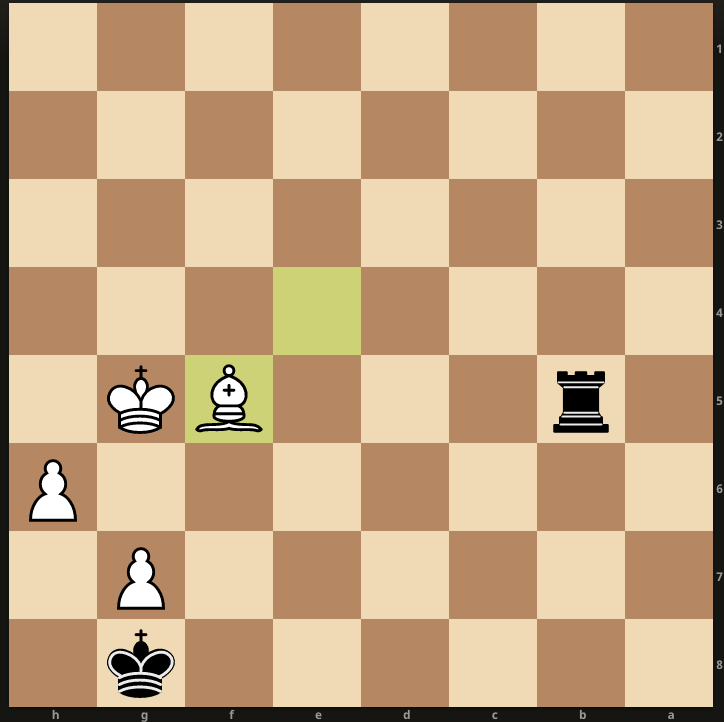
CHALLENGE for you: What should Black play in order to draw? What is the main idea?
-
-
-
-
-
Answer: 97. Rb6!
The answer builds off the idea from the previous position in the theoretically drawn endgame against Adam where you need to cut off the opposing king’s entry.
I did that well the entire endgame but I didn’t understand this concept in this situation. I was simply shuffling my rook around, trying to be annoying to White’s king with checks, but with no real awareness of this idea.
Instead of Rb6, I played Ra5, and the King marched in with Kf6 and eventually won the game.
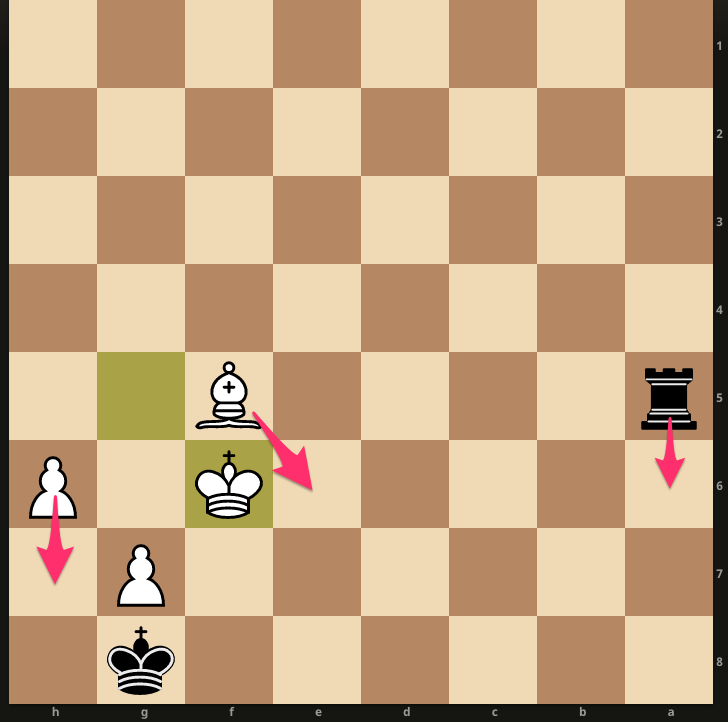
I was inches away from getting a draw from a national master. Maybe one day, I‘ll get another shot…
Game 39 — Facing the same national master I lost to 4 days later…
Who would have thought the chance to play a national master would be 4 days later at a weekend tournament. Not only that, but I’m playing the SAME guy. I had analyzed our game extensively over the last few days with my friend Luiz and my coach Eric Rosen. I had spent the week prior, analyzing his games preparing for our first match together. So I’ve been thinking deeply about this guy for the last 7 days and here we meet again.
Time to get my revenge.
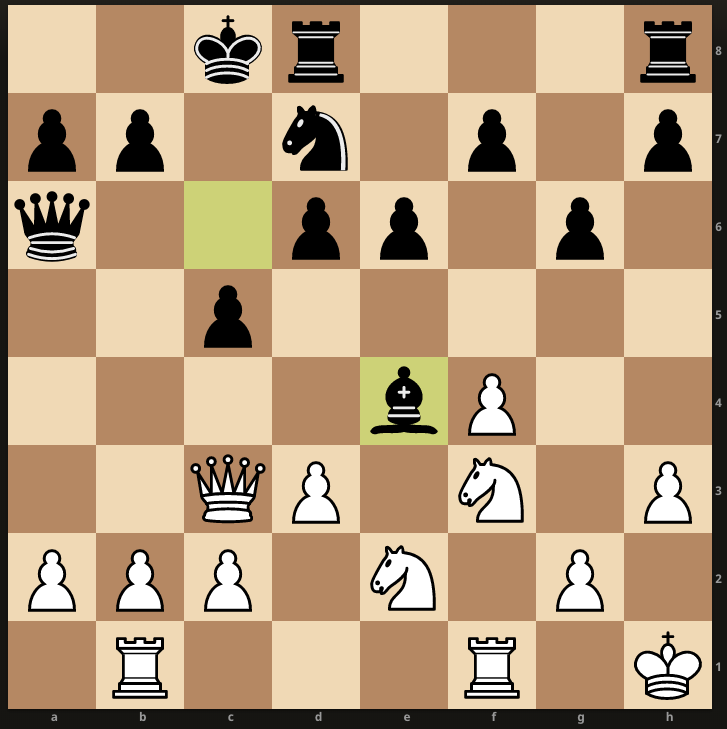
The tournament directors blessed me with the White pieces and I had a pretty comfortable position out of the opening. Until Black played Bxe4, with the intention that if I capture back with the d-pawn, my knight on e2 will be exposed for the Black Queen, which means that Black will be up a pawn.
Dam National Master tactics… I thought it was over and that another loss would be in my books. But wait. I realized that Bxe4 is actually a big blunder.
I didn’t capture the bishop back. Instead, I played an even more powerful and forcing move.
CHALLENGE: Which move did I play in the game to counterattack Black’s position?
-
-
-
I played Ng4!
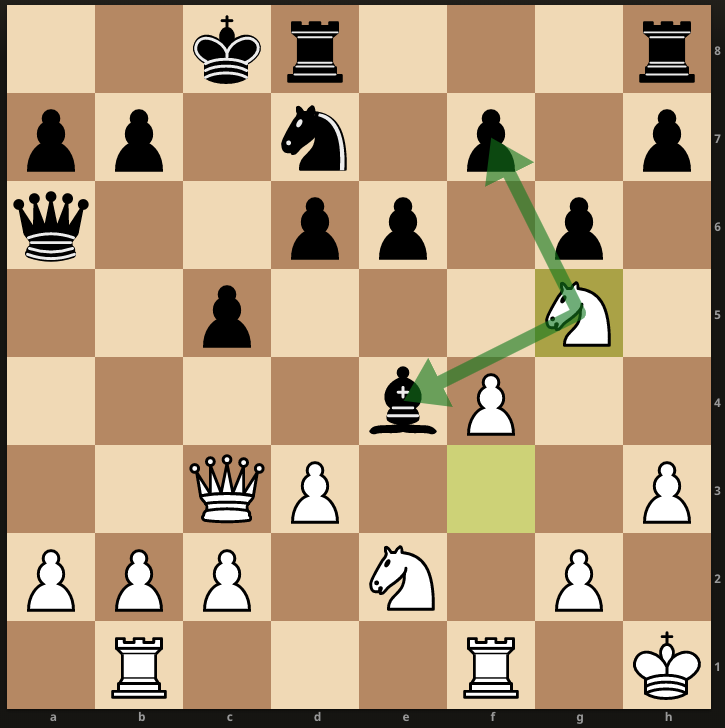
Double attack on the bishop and attacking the f7 pawn, threatening to fork (attack two pieces at once, like a fork) both of Black’s rooks. After the game, Romulo admitted that he completely missed this, and I was able to win shortly after.
WOW!!! My first win against a national master!!! Never in my wildest dreams could I have imagined accomplishing this goal. All the studying, deliberate practice and wild obsession have paid off in a way that I never thought possible.
This win is one of my proudest accomplishments, ever.
— — — — —
I fizzled out competing in chess tournaments by the end of 2019 so that was a good four and a half months of intense focus. I continued to teach for three more months at schools and private lessons while I got back on the job search. It was time to move on to bigger and better things.
This chess experience was such an emotional journey and taught me so much about myself as a competitor.
I needed to upgrade my mindset to push for the win. I had to get rid of my ego and never underestimate any opponent. I had to go through the experience of losing so many times to higher-rated opponents in order to eventually get my shot.
The biggest lesson I learned was when I asked my chess coach, International Master Eric Rosen, how did he get so good, so fast? He replied back with this email.
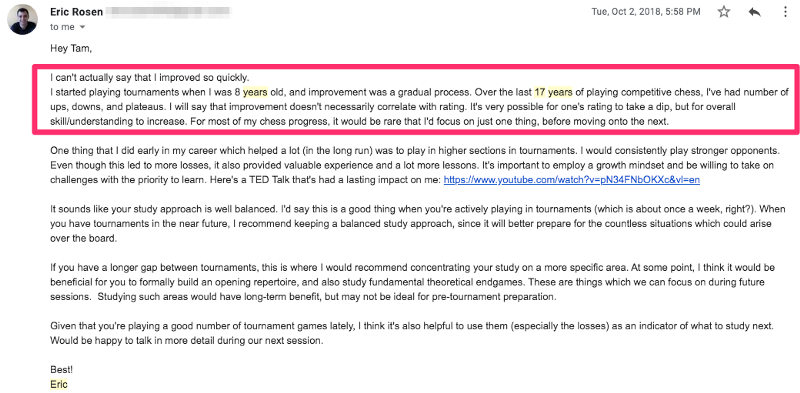
Being a master at your craft requires hard work, grit, and patience. My rating now is around 1900 and I have a long way to go before I become a chess master myself. The sky is the limit and I know one thing for certain: No draws.
If you’d like to learn more about chess, I have so many recommendations on where to start.
READ: The Art of Learning
READ: All The Wrong Moves
WATCH: St Louis Chess Club Lectures on YouTube. My favorite teachers are Eric Rosen, Alejandro Ramirez, Var Akobian, and Ben Finegold. Start with these lectures:
- The St. Petersburg 1914 Tournament — GM Alejandro Ramirez
- Pros Losing Really Quickly | Play Like a Pro — IM Eric Rosen
- Akobian at the 2014 Olympiad | Mastering the Middlegame — GM Varuzhan Akobian
- Ben’s Great Endgames… and Stories | Endgame Exclam!! — GM Ben Finegold
- Knight Studies — GM Maurice Ashley
WATCH: any videos from John Bartholomew, agadmator, Eric Rosen (my coach), The Chess Website (where I first learned how to play) and chessbrah (more entertainment than real learning)
You can see the entire study of the above notable games, fully annotated by yours truly here. Hope you enjoyed this piece and let’s play chess together soon.
Tam Pham's Blog
I write about my adventures, learnings, and reflections on living my weird, unconventional life. Subscribe below!


